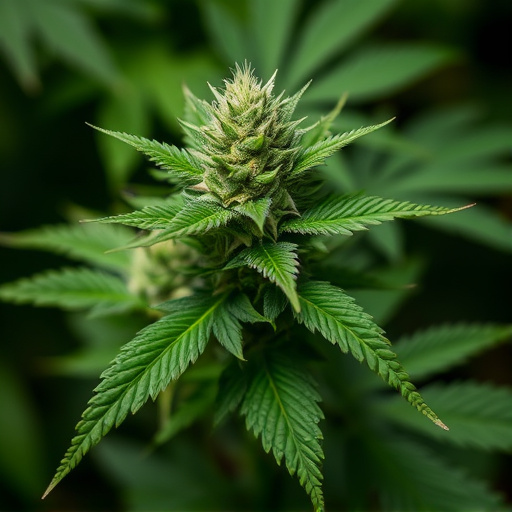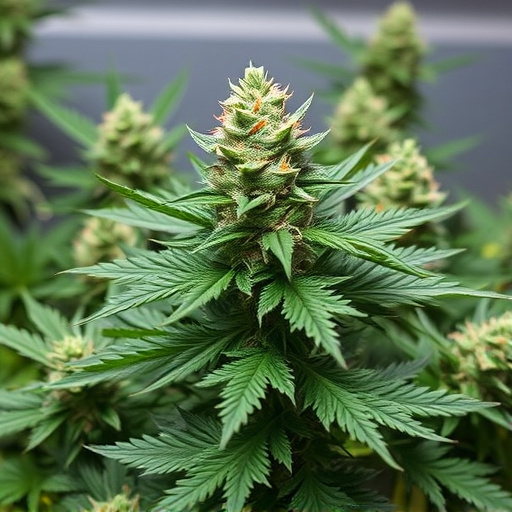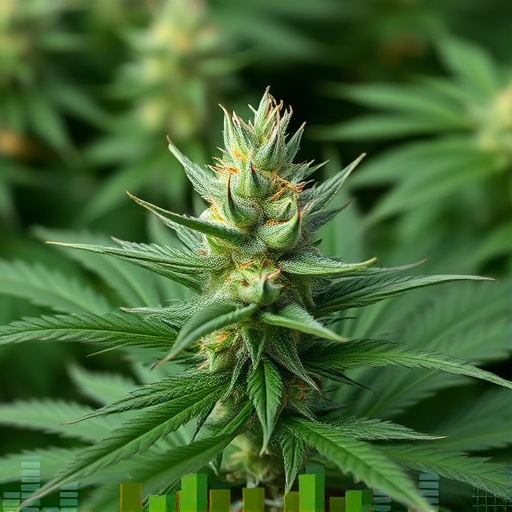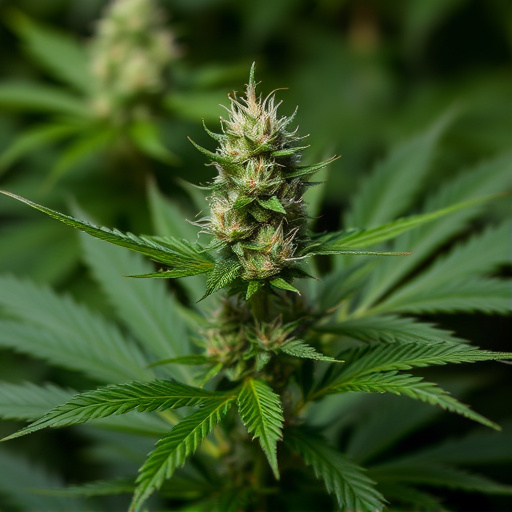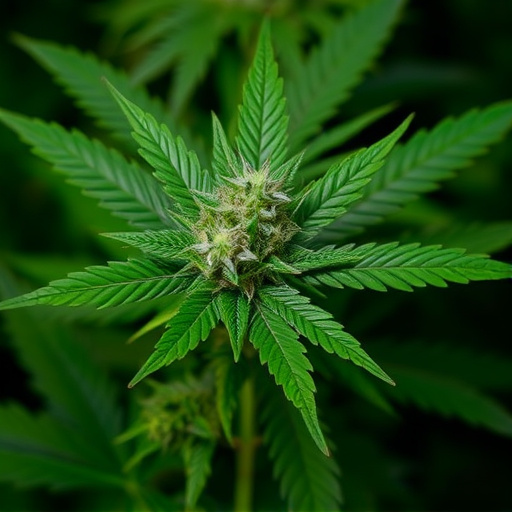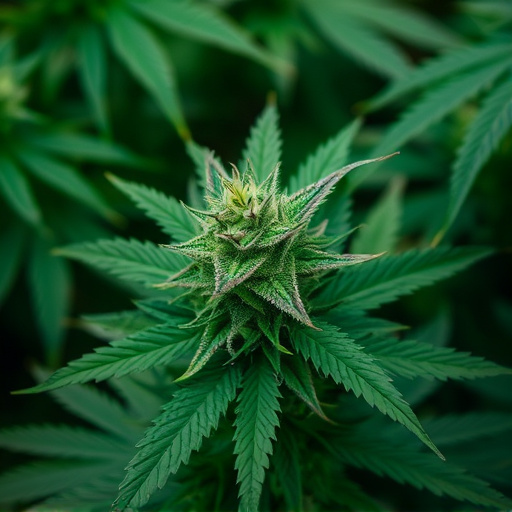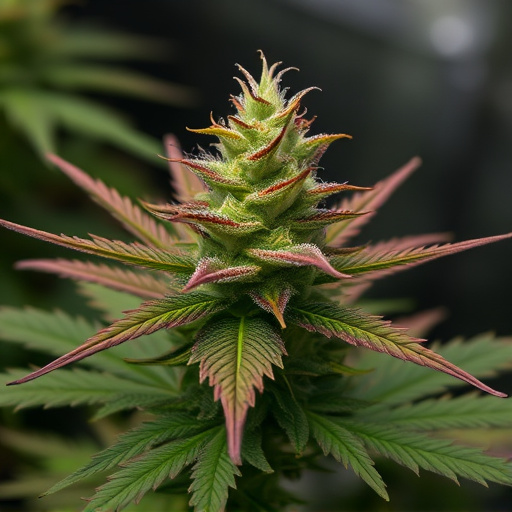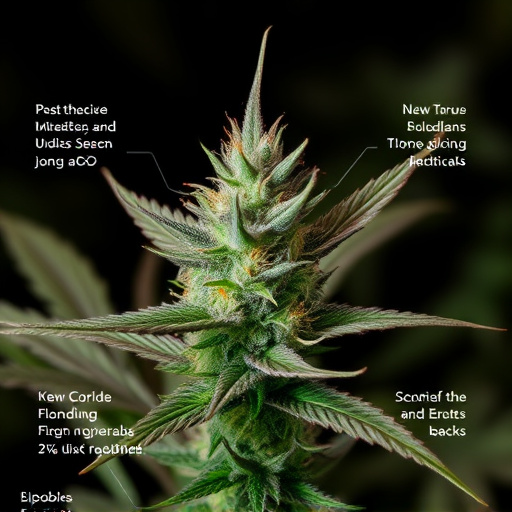Cannabis metabolism varies greatly among individuals due to factors like body weight, tolerance, and cannabis strains effects. Compounds enter the bloodstream through lungs or digestion and are primarily metabolized in the liver by CYP450 enzymes. THC has a half-life of 15-70 hours, while CBD has a much longer half-life of around 9 days. Cannabis strains effects influence metabolism rates and clearance time; heavier THC concentrations extend detection time, while CBD is cleared faster. Regular use, metabolism, and consumption methods also play significant roles in detectability. Long-term cannabis use can lead to cognitive changes, respiratory issues, and social/legal implications.
Discover how long cannabis flowers can stay detectable in your system. This comprehensive guide explores the intricate process of cannabis metabolism and elimination, factoring in various influences on detection time. From understanding the effects of different cannabis strains to considering long-term implications, this article provides insights into the scientific behind-the-scenes of how cannabinoids persist in the body.
- Understanding Cannabis Metabolism and Elimination
- Factors Influencing Cannabinoid Detection Time
- Long-Term Effects and Potential Implications
Understanding Cannabis Metabolism and Elimination

Cannabis metabolism and elimination are complex processes that vary from person to person, influenced by factors such as body weight, metabolism, tolerance, and the specific cannabis strains effects. When consumed, cannabis compounds enter the bloodstream through the lungs or digestive system. Once there, they’re metabolized primarily in the liver by an enzyme called CYP450, which breaks down THC (tetrahydrocannabinol), CBD (cannabidiol), and other cannabinoids into various byproducts. Some of these metabolites are fat-soluble, meaning they tend to stick around longer due to their ability to get stored in bodily tissues, like fat cells and adipose tissue.
The elimination half-life—the time it takes for the body to clear half of a substance—for THC is estimated to be approximately 30 hours, but this can range from 15 to 70 hours depending on individual factors. CBD has a longer half-life, around 9 days, which means its effects can persist for several days after consumption. The specific cannabis strains effects also play a role; different strains have varying ratios of cannabinoids, influencing how quickly and thoroughly they’re metabolized and eliminated from the system.
Factors Influencing Cannabinoid Detection Time
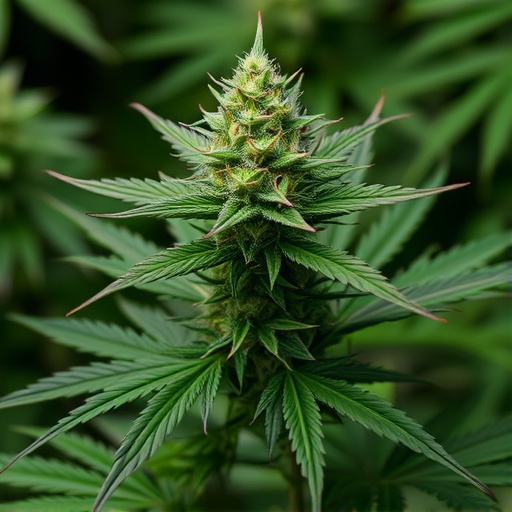
Several factors influence how long cannabis stays detectable in your system, including the type or strain of cannabis used. Different cannabis strains have varying levels of cannabinoids like THC and CBD. Heavier concentrations of THC tend to prolong its detection time, as it’s more fat-soluble and can linger in adipose tissue for extended periods. On the other hand, CBD is water-soluble, leading to quicker elimination from the body.
Other factors include frequency of use, individual metabolism, and method of consumption. Regular users may find cannabis stays detectable longer due to built-up tolerance. Metabolism plays a significant role; faster metabolizers might clear cannabinoids faster. Additionally, how cannabis is consumed impacts detection times; smoking or vaping results in faster absorption and elimination compared to ingestion through edibles or beverages.
Long-Term Effects and Potential Implications
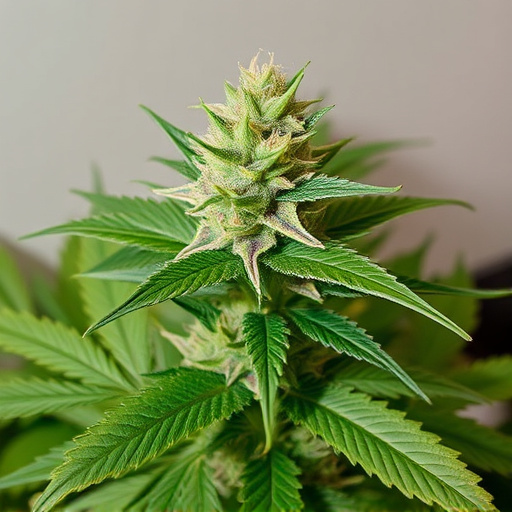
The long-term effects of cannabis on the human body and mind are an area of ongoing research, especially as perceptions and legalities surrounding its use continue to evolve. While acute intoxication is typically short-lived, the presence of cannabis in your system can have more persistent implications, particularly for frequent or heavy users.
Cannabis strains with higher THC concentrations, when consumed regularly, may lead to long-lasting cognitive and behavioral changes. These effects can include impaired memory, concentration difficulties, and potential mental health risks, especially in adolescents whose brains are still developing. The impact of cannabis on respiratory health is another concern, as chronic use has been linked to coughing, wheezing, and an increased risk of respiratory infections. Additionally, the social and legal implications cannot be overlooked, as positive drug tests can have significant consequences, affecting employment opportunities and personal relationships.
Cannabis metabolism varies among individuals, with factors like tolerance, frequency of use, and method of consumption influencing how long cannabinoids remain detectable. While short-term effects may dissipate within days or weeks, long-term use can lead to more persistent traces in the system. Understanding these dynamics is crucial for those considering cannabis strains’ potential effects on their lives, especially in settings where testing is routine. Regular use and higher concentrations can extend detection times, underlining the importance of responsible consumption and informed decision-making.


